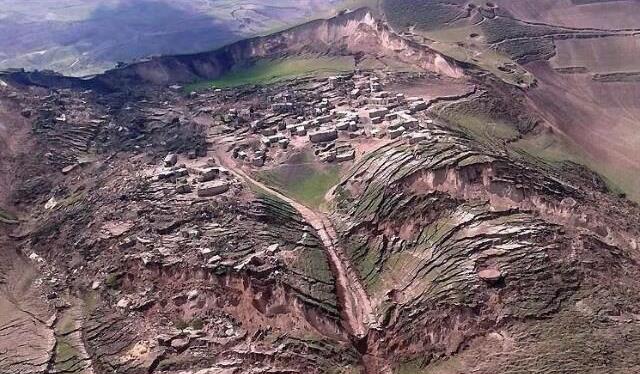The strange case of the Rushtaq landslide in Afghanistan
The Rustaq landslide
Whilst researching the Ab Barak landslide in Afghanistan last week, I came across this image of another landslide in Afghanistan:
This is clearly a very large and very spectacular landslide that has induced a enormous amount of damage. The reports were that this slide was also triggered by the heavy rainfall of 10 days or so ago. However, I did some background research and found that this is not the case. In fact, this landslide was triggered on 12th April this year – the above image (and another similar one) is on the European Space Agency website, dated 13th April, with a caption that says:
““
In fact, this landslide was reported in the media, but with no real indication of the magnitude of the event. Although the ESA list the cause as an earthquake, in the media the landslide is attributed to an earthquake working in conjunction with heavy rainfall.
The Rustaq landslide seems to be located at 37.155°N, 69.599°E, which yields this perspective view of the location in Google Earth:
..
By eye, this looks to be the right location, although with the resolution of the imagery it is hard to be sure. The really interesting aspect of this though is the magnitude and location of the reported earthquake. The above article refers to the earthquake as follows:
According to the United States Geological Survey, a minor 4.1-magnitude quake struck northeast Afghanistan at 2am at a depth of 203 kilometres.”
If that is right then this is the earthquake, which according to the USGS had the following parameters:
Magnitude: Mb=4.1
Location: 36.514°N, 70.403°E
Depth 203.8 km ± 9.0 km
This is interesting as the earthquake was not particularly close to the landslide and it was also very deep. It would be highly unusual for such a deep earthquake, especially of this magnitude, to trigger landslides. However, it should also be noted that the landslide itself has developed a substantial amount of displacement. Whilst large, rapid, long runout, rainfall-induced landslides are far from unknown, the shape of this landslide seems quite unusual to me for one of these events. In particular, the low gradient upper portion of the landslide, with the very large displacement across the rear tension crack, is the sort of feature that I’d expect to develop progressively, or to result from a seismic event.
On the face of it that appears not to be the case here, which makes the Rushtaq landslide unusual and very interesting. All-in-all it is slightly mysterious. Perhaps the most important aspect though is the hazard posed by the site – in future heavy rainfall or an earthquake, complete failure of this site is a distinct possibility. It has the potential to destroy large numbers of houses and it represents a major hazard in the valley. A landslide dam cannot be ruled out either.




 Dave Petley is the Vice-Chancellor of the University of Hull in the United Kingdom. His blog provides commentary and analysis of landslide events occurring worldwide, including the landslides themselves, latest research, and conferences and meetings.
Dave Petley is the Vice-Chancellor of the University of Hull in the United Kingdom. His blog provides commentary and analysis of landslide events occurring worldwide, including the landslides themselves, latest research, and conferences and meetings.
Recent Comments